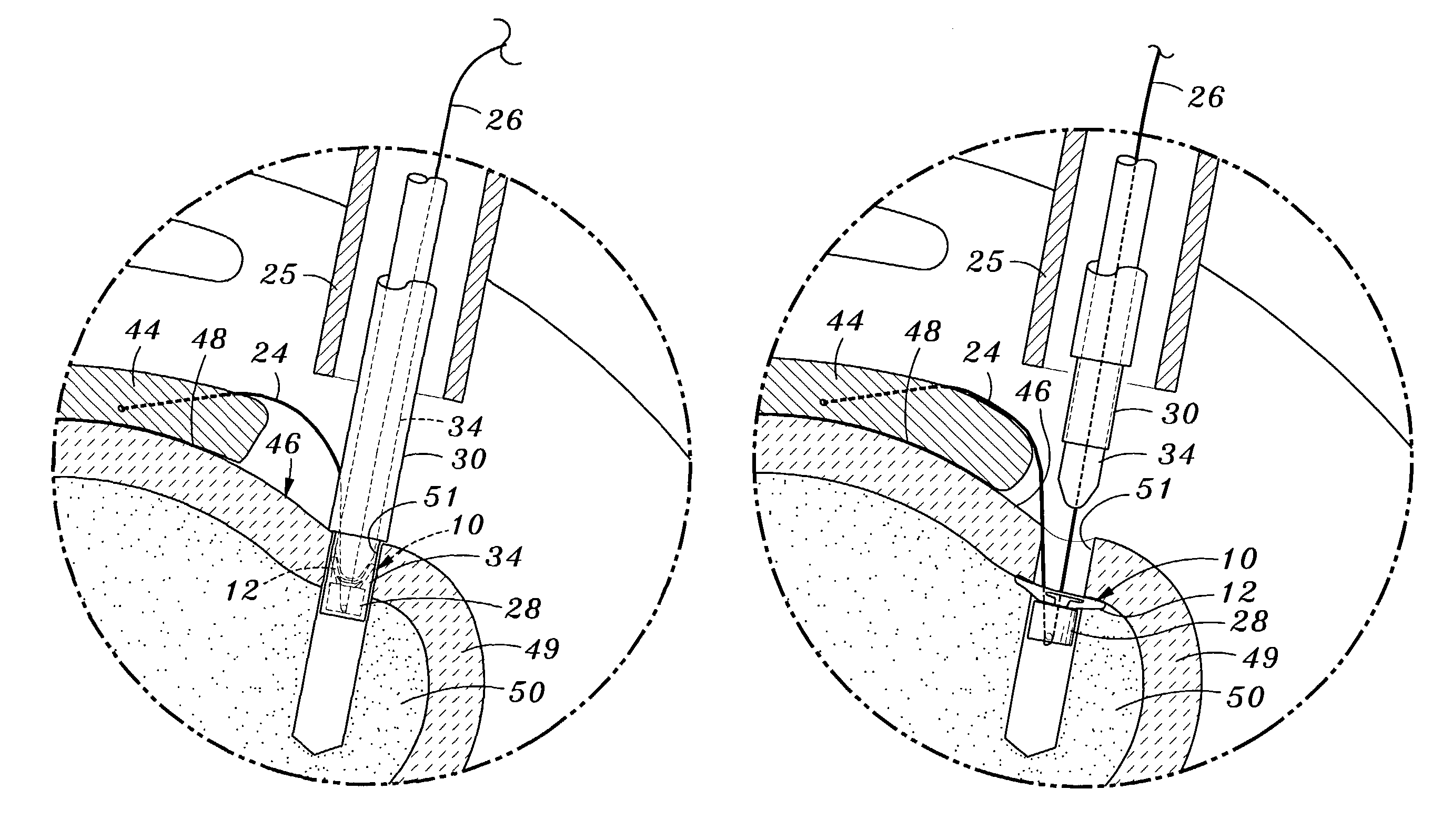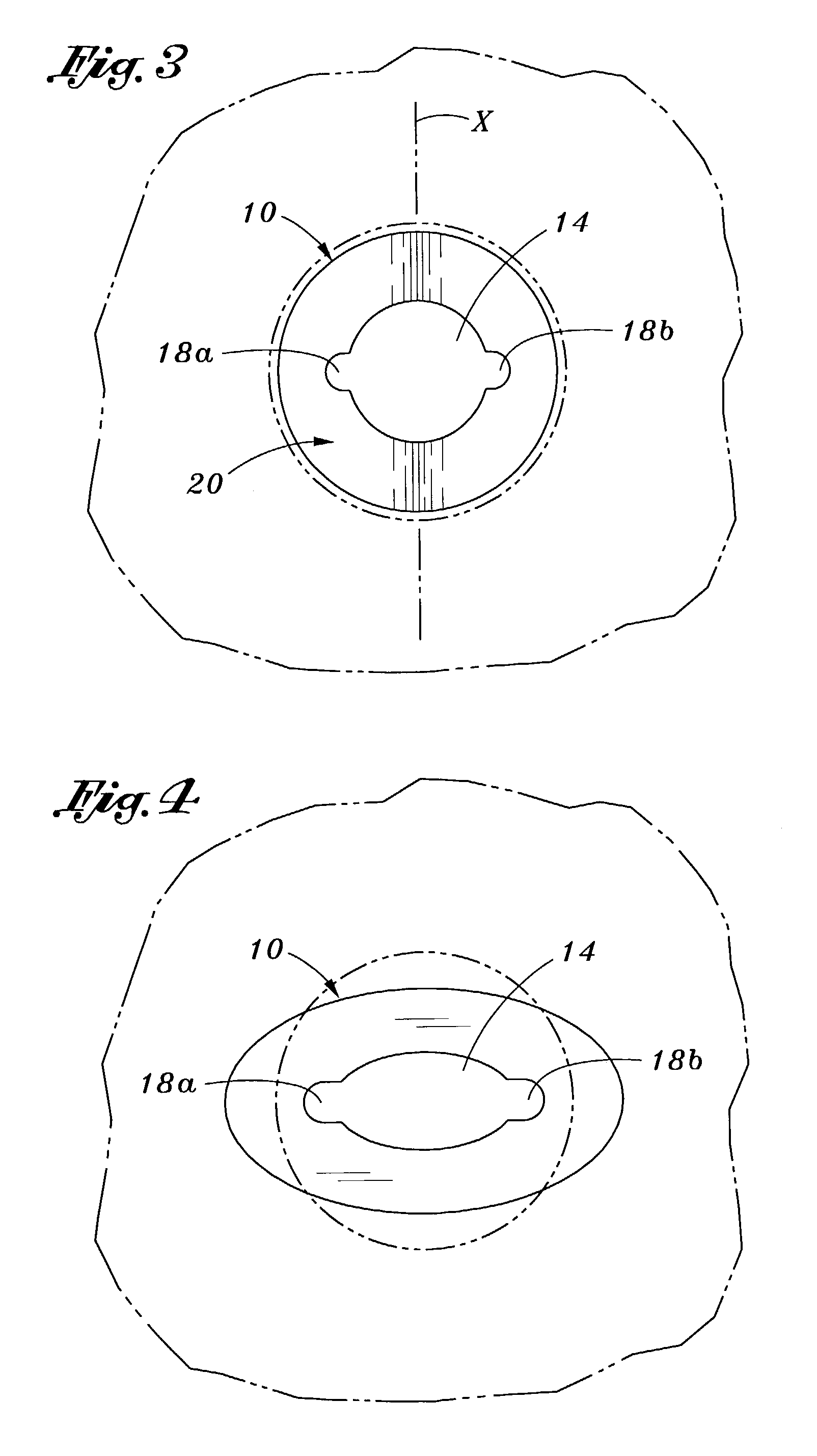Method and apparatus for attaching connective tissues to bone using a cortical bone anchoring device
a technology of cortical bone and anchoring device, which is applied in the field of anchoring methods and methods for securing connective tissue, can solve the problems of increasing the common problem of tendons, pain and loss of the ability to elevate and externally rotate the arm, and residual weakness
- Summary
- Abstract
- Description
- Claims
- Application Information
AI Technical Summary
Benefits of technology
Problems solved by technology
Method used
Image
Examples
Embodiment Construction
[0055]Referring now more particularly to the drawings, there is shown in FIG. 1 a bone anchor 10 constructed in accordance with an embodiment of the present invention, comprised of an elliptical disk 12 with a generally circular aperture 14 in its center. In this first embodiment, the disk 12 is fabricated of flat stock, preferably 301 stainless spring steel, or other biocompatible equivalent material, and has a thickness of approximately 0.031 inches. First and second slits 16a and 16b, respectively, formed in a generally “T” shape when viewed from the side, are cut into each side of the annular disk from its distal end, using electro-discharge machining (EDM) techniques, or the like, and are spaced approximately 180 degrees from each other about the periphery of the disk. The “T” shaped slits 16a, b are cut entirely through the annular sidewall 17 of the disk 12, and function to allow the disk to be bent in an upward or proximal direction for deployment into a portion of bone, as ...
PUM
 Login to View More
Login to View More Abstract
Description
Claims
Application Information
 Login to View More
Login to View More - R&D
- Intellectual Property
- Life Sciences
- Materials
- Tech Scout
- Unparalleled Data Quality
- Higher Quality Content
- 60% Fewer Hallucinations
Browse by: Latest US Patents, China's latest patents, Technical Efficacy Thesaurus, Application Domain, Technology Topic, Popular Technical Reports.
© 2025 PatSnap. All rights reserved.Legal|Privacy policy|Modern Slavery Act Transparency Statement|Sitemap|About US| Contact US: help@patsnap.com



